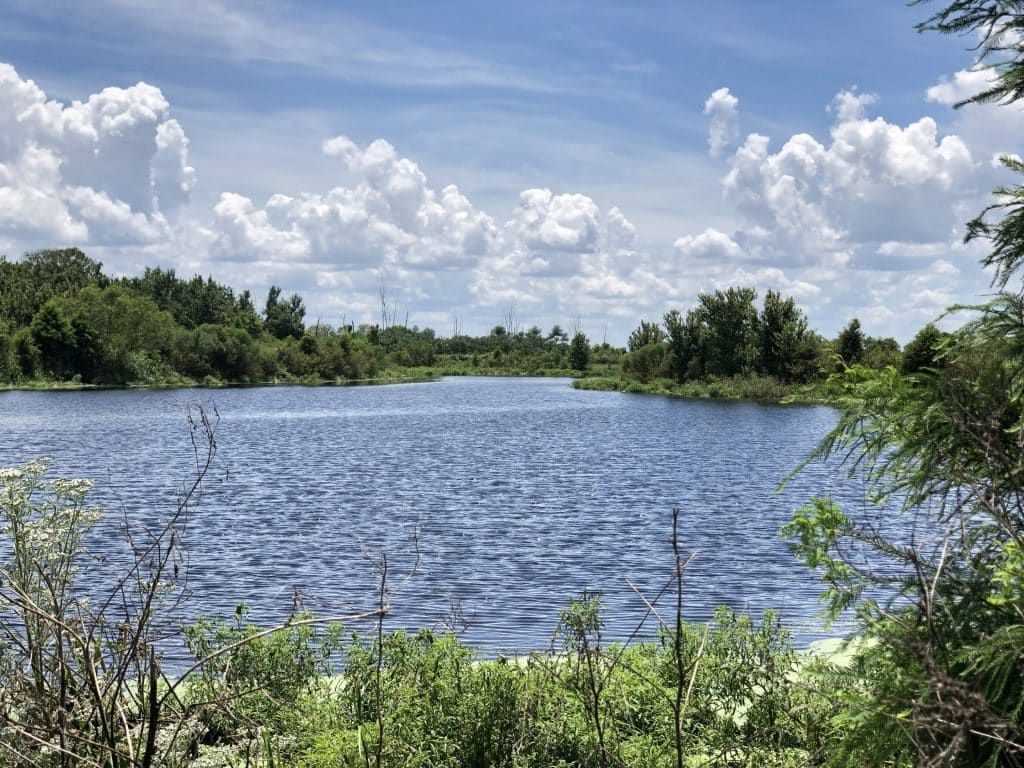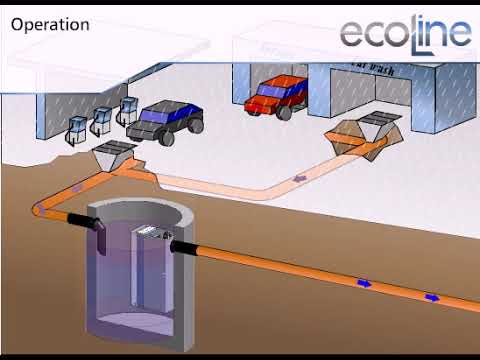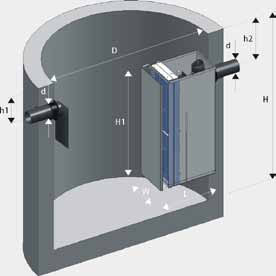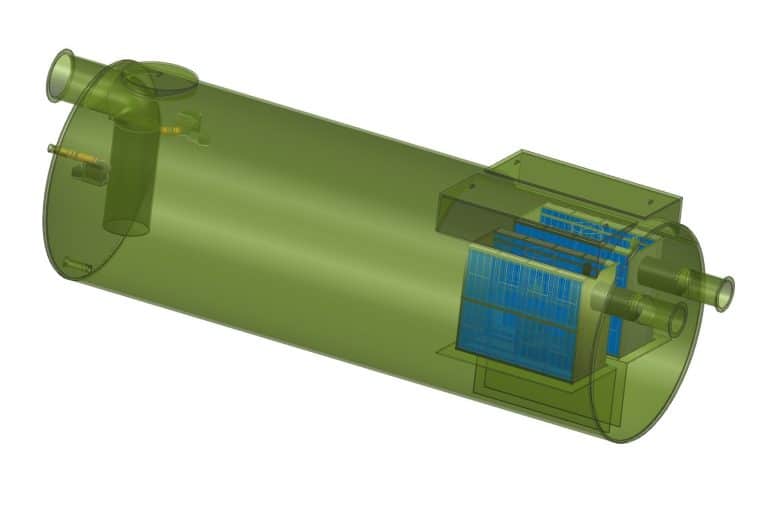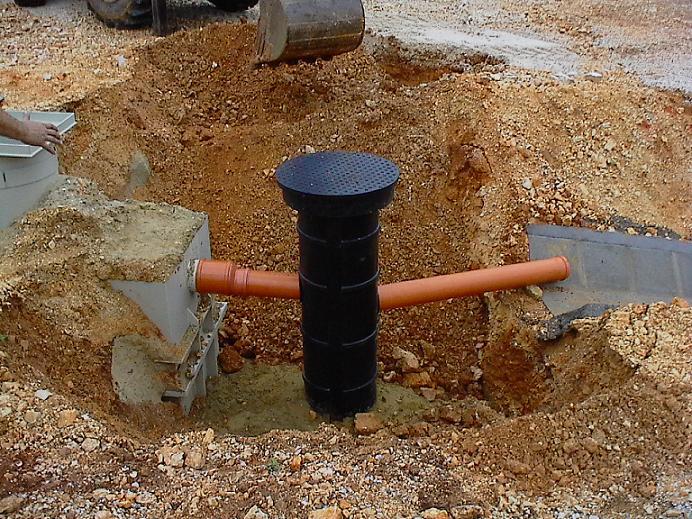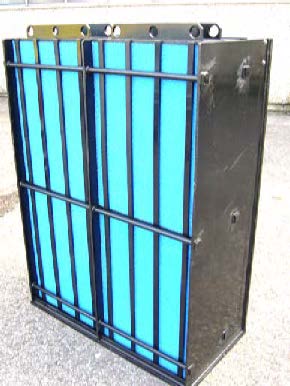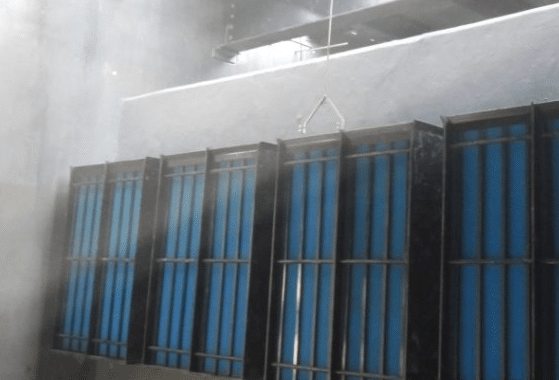As industries face the need for eco-friendly wastewater treatment, a key question emerges. Are there alternatives to below ground OWS? With over three decades of experience in wastewater management, solutions must meet strict standards and promote sustainability. The search for innovative, sustainable wastewater solutions has grown, driven by new regulations and the need for cost-effective systems.
Companies are now exploring above ground options and mobile systems. These alternatives aim to reduce costs and environmental harm. This shift is a response to the challenges posed by traditional below ground OWS systems.
Key Takeaways
- Many industries require innovative solutions for eco-friendly wastewater treatment.
- Below ground OWS systems face growing scrutiny due to compliance and efficiency challenges.
- There are sustainable wastewater solutions that can significantly reduce environmental impacts.
- High-capacity portable systems can offer flexible, cost-effective alternatives to traditional methods.
- Advanced technologies are improving the performance and efficiency of wastewater management.
Understanding Oil Water Separators (OWS)
Oil Water Separators are special systems that remove oil, grease, and hydrocarbons from water. They are key in treating wastewater, mainly in industrial areas where oil pollution is a big problem. Knowing what OWS are helps us see how they help protect our environment.
Definition of OWS
OWS are devices that separate oil from water using their different weights. They are important for cleaning wastewater from many industries. By using gravity or coalescing, they make water clean again.
Importance in Environmental Protection
Oil water separators are vital for keeping our water safe and protecting the environment. They make sure water meets standards and keeps pollutants out of nature. Keeping them in good shape is essential for following rules and doing a good job.
By removing oil from wastewater, they help avoid harming our planet. This supports green practices in many industries.
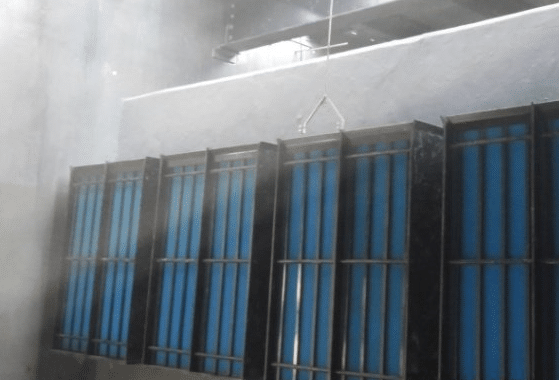
Types of OWS Technology
It’s key to know the different types of OWS technology for good wastewater management. Each type has its own benefits and fits different needs. Here are the main types of OWS systems.
Below Ground OWS
Below ground OWS systems are buried and installed under the ground. They face challenges like maintenance and getting to them. These systems work well to separate oil and water but need big digging for checks or fixes.
They are often chosen for places that care about looks.
Above Ground OWS
Above ground OWS systems are easy to get to and watch. They sit on the surface, making it simple to do upkeep and checks. This makes them quick to fix in emergencies.
Places with enough room and setup might prefer these systems.
Mobile OWS Systems
Mobile OWS systems are flexible and can go to many places. They’re great for sites like drilling rigs or short-term projects. They’re perfect for industries that change their needs often.
Differences Between Below Ground and Above Ground OWS
When looking at below ground vs above ground OWS, several factors are important. These include installation, maintenance, and how well they work. These aspects affect how easy it is to set up and how well the system works over time.
Installation Considerations
Below ground units need a lot of digging, which can make setup expensive and time-consuming. You also have to plan carefully and follow local rules. On the other hand, above ground OWS are easier to install. They can be set up quickly, with less disruption.
This makes above ground systems a good choice for many places.
Maintenance Requirements
Maintenance for below ground OWS is harder because they’re harder to get to. This means repairs and regular checks take longer and are more work. It can also cause downtime, which hurts efficiency.
But, above ground systems are easier to get to. This makes it simpler to check, fix, and service them. It helps keep things running smoothly and cuts down on downtime.
Efficiency Comparisons
When it comes to how well they work, above ground OWS are usually better. They are designed to monitor and work better, leading to better water treatment. If you need the best results, an above ground system might be the better choice.
Advantages of Above Ground OWS
Above ground oil water separators (OWS) have many benefits. One big plus is easier maintenance access. This means less downtime and fewer interruptions.
Regular upkeep is key for top performance. Above ground systems make maintenance quick and easy. This saves time and keeps workers safe.
Easier Access for Maintenance
Maintenance access is vital for above ground OWS. Equipment at ground level means fast inspections. This cuts down waiting times and boosts maintenance efficiency.
This easy access also improves safety. It makes maintenance work safer for everyone involved.
Enhanced Monitoring Capabilities
Above ground OWS offer better monitoring. Operators can watch system performance closely. This lets them make quick adjustments as needed.
Real-time data helps improve operations. It leads to better water treatment and results.
Potential for Greater Separation Efficiency
Another big plus of above ground OWS is better separation efficiency. They use advanced tech for better oil removal and wastewater treatment. This is better for the environment and meets regulations.
It ensures the water meets quality standards. This is important for both local and federal rules.
Freytech’s Enhanced Coalescing Technology
Freytech Inc. has created a new way to separate oil from water. Their technology is very effective, removing many types of hydrocarbons. It makes water so clean that it has less than 5 PPM of oil.
Companies can greatly benefit from this technology. It works much better than older methods.
Overview of Separation Efficiency
Freytech’s technology is very good at separating oil from water. Older oil water separators often don’t work as well, but Freytech’s system does. It uses special media to catch even the smallest oil droplets.
This makes the water much cleaner.
Comparison to Traditional OWS
Freytech’s technology is much better than old oil water separators. These older systems can’t handle a lot of oil or emulsified hydrocarbons. But Freytech’s system can remove 99.9% of oil droplets over 20 microns.
Businesses using this technology will meet environmental rules better. They will also make water even cleaner than North American standards require.
Separation Capability of Freytech OWS
Freytech’s OWS systems are designed to separate oil effectively. They handle both free oil and emulsified oil well. This makes them great for many industrial uses.
Efficient Free Oil Separation
The OWS system quickly removes free oil from wastewater. It uses advanced technology for a clean separation process. This helps businesses meet environmental standards and reduce their impact.
Emulsified Oil Removal
Freytech OWS also excels in removing emulsified oil. This is key for following strict discharge rules. The system breaks down emulsified oils, leading to cleaner wastewater.
Thanks to these features, Freytech stands out in oil separation technology. It helps facilities discharge cleaner water, supporting green practices.
Performance Metrics of Freytech OWS
The performance of Freytech Oil Water Separators is top-notch. They handle environmental rules and efficiency with ease. Thanks to advanced engineering, these separators can separate contaminants at a 0.1 PPM level. This is way above the usual standards.
0.1 PPM Separation Efficiency
Freytech’s commitment to high standards is clear in its 0.1 PPM separation efficiency. This shows how well the technology works. It also means the treated water meets strict North American discharge limits.
Keeping hydrocarbon levels low helps keep our environment clean. This is good for everyone’s health.
Compliance with North American Discharge Limits
Following North American discharge limits is key for industries dealing with wastewater. Freytech’s OWS systems keep hydrocarbon releases very low. This helps companies follow the rules and care for the environment.
This focus on excellence makes Freytech a leader in oil-water separation solutions. They are all about sustainable practices.
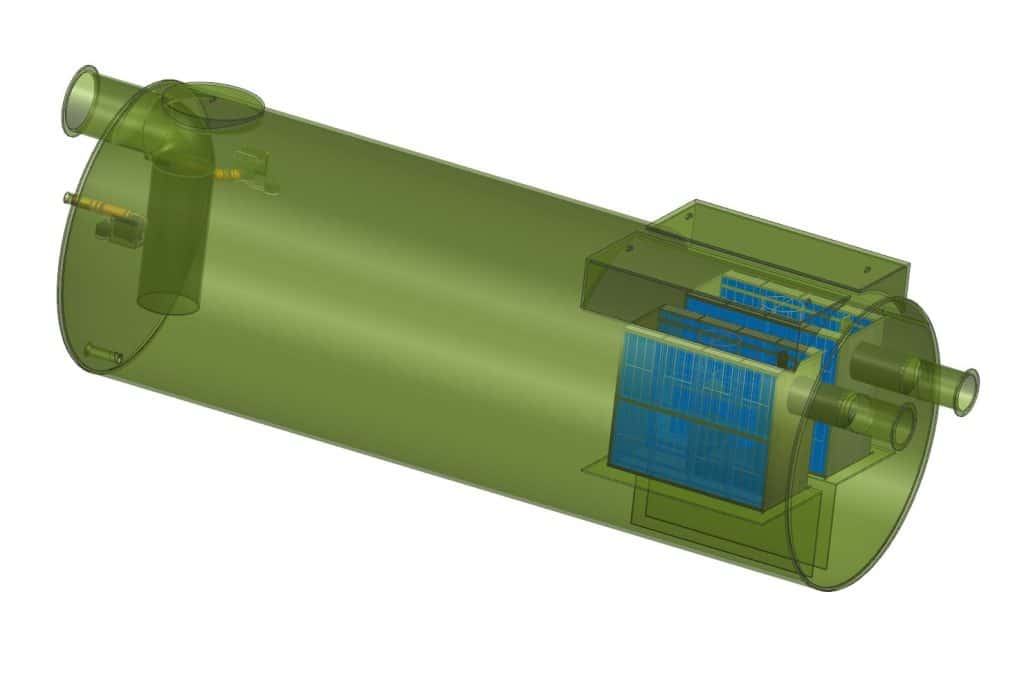
Reusable Coalescing Media Benefits
Using reusable coalescing media in oil-water separation systems has many benefits. It lasts long and saves money. This technology is built to last, handling tough operations well.
Places that use it need to replace it less often. This means less waste and better management of wastewater. It’s good for the environment.
Longevity and Cost Efficiency
The durable nature of reusable coalescing media makes it last a long time. It works well for a long time, saving money. It also helps save water by reusing it.
It’s great at cutting down FOG (Fats, Oils, and Grease) in water. This shows it’s effective and worth the investment. It helps meet environmental rules.
Easy Maintenance Procedures
Maintaining reusable coalescing media is simple. This means less time and money lost on upkeep. Cleaning and fixing it is easy, making life easier for everyone.
This simplicity adds to the cost savings. It’s a smart choice for companies looking to save money. It keeps operations running smoothly and efficiently.
Role of Oil Skimmers in OWS
Oil skimmers play a key role in oil water separators (OWS). They help remove floating oils from wastewater. The skimming process works continuously, making it efficient and meeting regulatory standards.
By automating oil recovery, facilities can work better. This leads to improved performance overall.
Mechanized Skimming Process
The mechanized skimming process uses advanced technology. It efficiently collects oil from the water’s surface. This system works well, even when the water flow changes.
Oil skimmers keep displacing oil. This makes the separation process more efficient. It also increases the amount of oil recovered.
Purity of Separated Oil
Oil skimmers in OWS make the separated oil very pure. Freytech’s technology can get the oil purity up to 99.7%. This makes the oil good for recycling and meets strict environmental rules.
Clean, high-quality oil is key. It helps lower costs and avoids fines from authorities.
Environmental Benefits of Efficient OWS
Efficient oil-water separators (OWS) bring big environmental wins. They cut down on harmful hydrocarbon pollutants in wastewater. These systems can get oil levels down to just 15 parts per million (PPM).
This ensures the water meets strict standards. It helps keep local ecosystems safe and improves water quality.
Reduction of Hydrocarbon Pollutants
Keeping aquatic environments healthy is key. OWS technology is a big help in this area. It limits hydrocarbon releases that harm fish and wildlife.
Using these systems also cuts down on greenhouse gases. This makes the air cleaner for everyone.
Contribution to Sustainable Practices
OWS systems do more than just clean water. They push for sustainable practices in industries. They encourage waste management and cleaner production.
This leads to eco-friendly and rule-following operations. It supports environmental care and better resource use. It’s a step towards a greener future.
Cost-Effectiveness of Freytech OWS Solutions
Freytech’s oil/water separator (OWS) solutions are not just good, they’re also cost-effective. Companies in mining, steel, and power generation see big benefits. They can manage wastewater better and save money and the planet.
Value of Efficiently Skimmed Oil
Getting oil back from wastewater saves money on materials and disposal. Freytech’s coalescing separators work fast and well. This means less cost and more time for what matters.
They can catch almost all oil droplets. This means big savings and helps businesses make more money.
Recycling and Disposal Savings
Freytech OWS solutions help save on recycling and disposal. This means less waste and fewer fines for not following environmental rules. Using these solutions can cut down on costs over time.
This shows how important it is for industries to be efficient and green. It’s a big step towards saving money and the environment.
Contact Freytech Inc. for OWS Solutions
Businesses with wastewater treatment problems should reach out to Freytech Inc. at +1 (305) 372-1104 for custom OWS solutions. They have a lot of experience in dealing with oil-contaminated wastewater. This includes mining, steel making, and food processing.
Freytech knows how hard it can be to separate oil and water effectively. They also make sure their solutions meet environmental standards.
Phone and Support Information
Getting in touch with Freytech Inc. means getting expert help for your specific needs. Their team provides detailed support to help businesses solve their wastewater issues. You can learn more about their solutions on their official website.
Consultation and Custom Solutions
Freytech Inc. focuses on eco-friendly and effective OWS solutions. Their consultants work with businesses to create solutions that fit their operations. This way, they improve separation and meet regulations in different industries.
